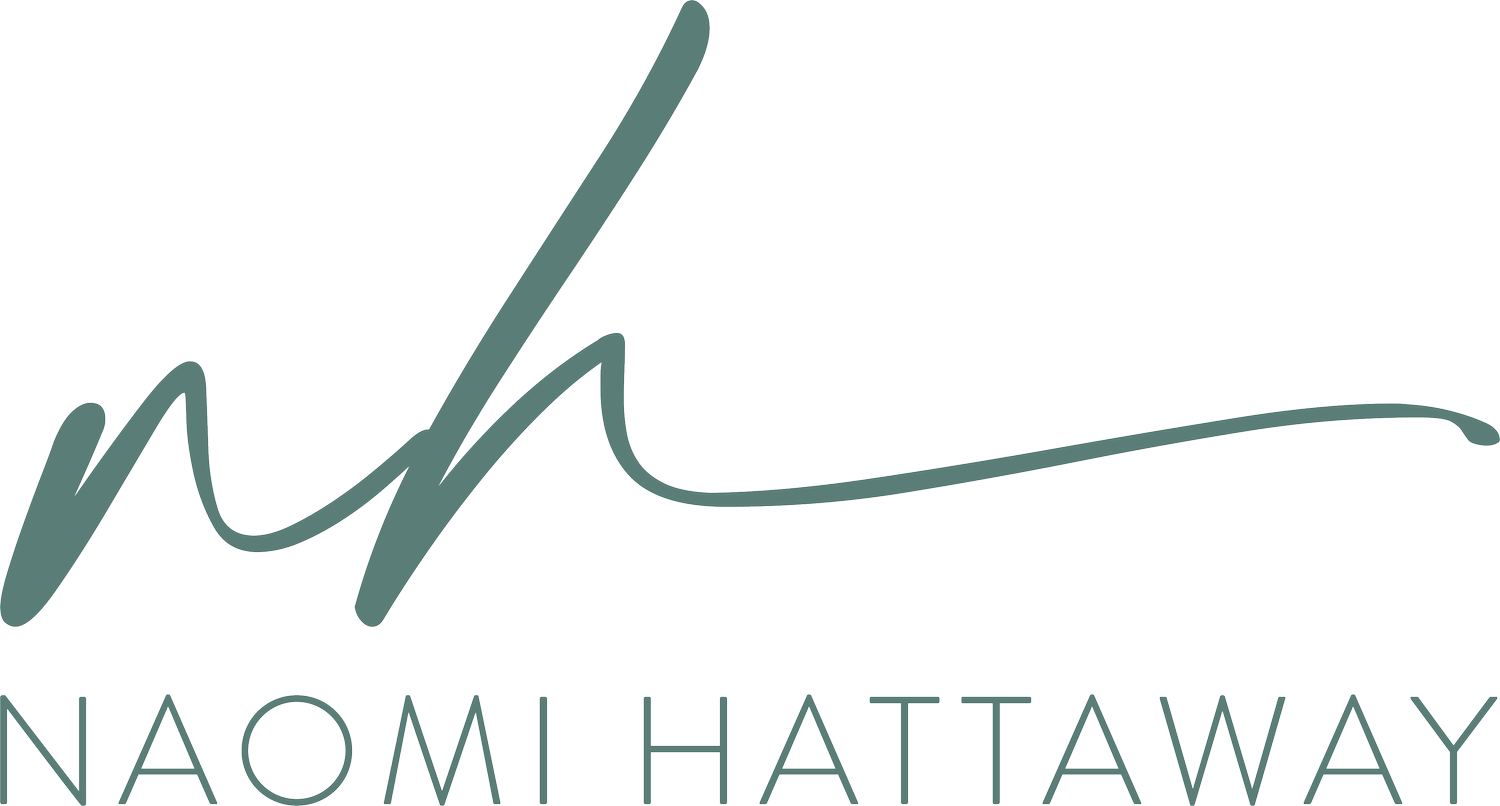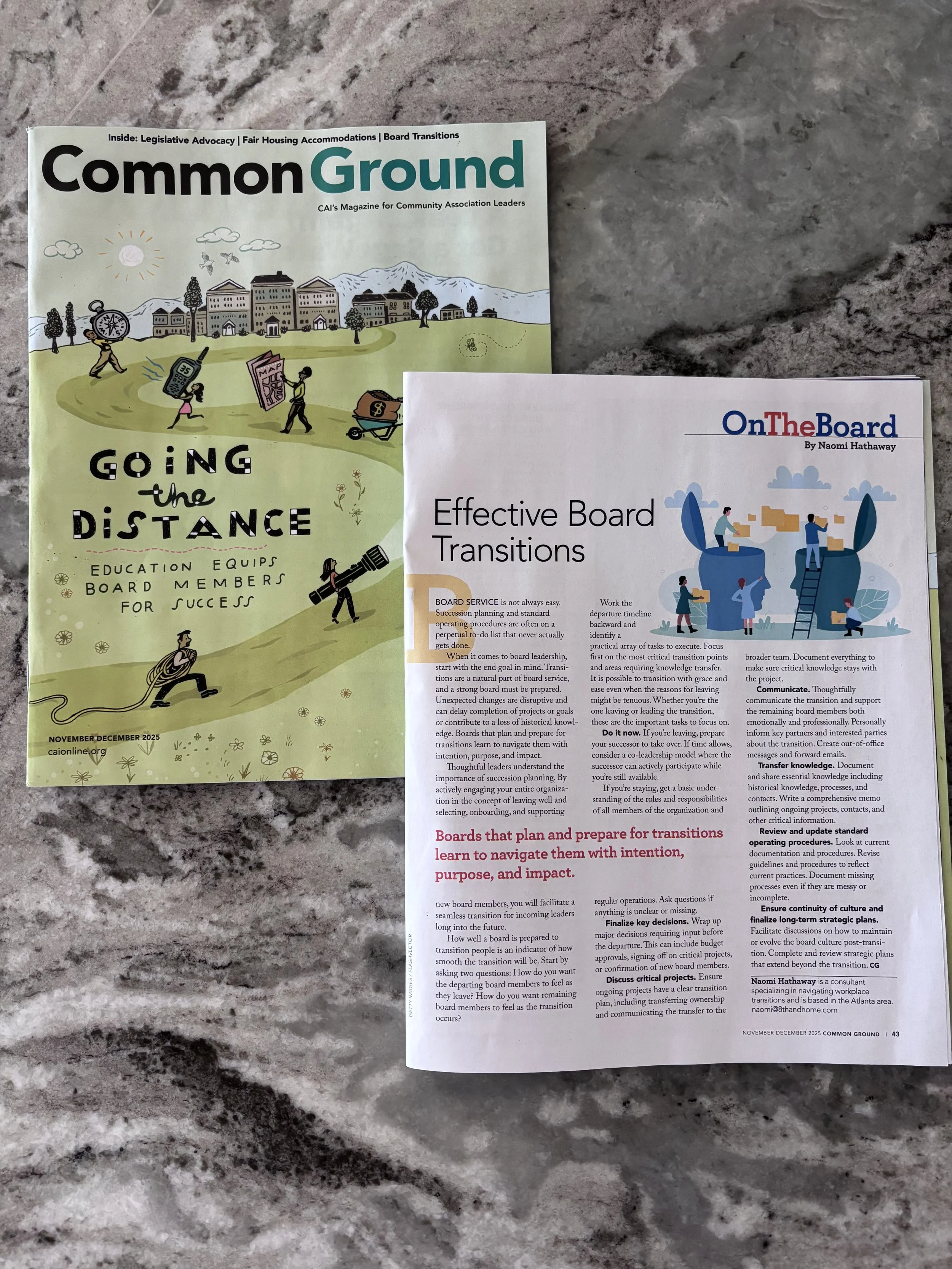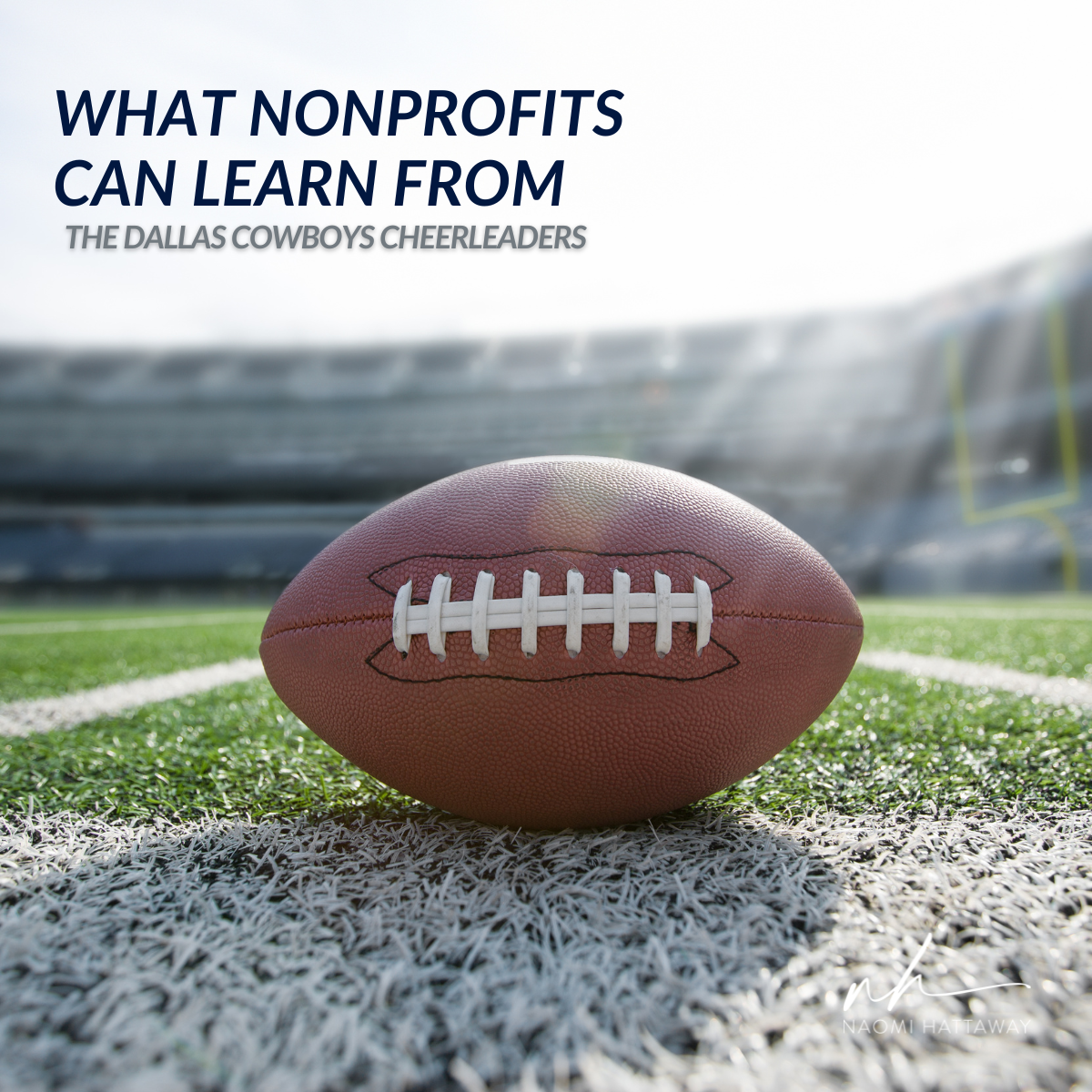Leaving Well Podcast - The Final Season: What Nearly 100 Conversations Taught Me About Leaving Well
After four seasons and nearly 100 episodes, I'm closing the Leaving Well Podcast. Not because the work is done—it's not. But because seasons end, and this component of the Leaving Well library is ready to wrap..
Over the next several months, I'll release the final Season 4 episodes. These conversations with leaders and experts carry the same clarity, care, and courage that made me fall in love with hosting this podcast in the first place. But before we get to those, I want to share what this journey has taught me about the very thing I set out to explore: Leaving Well.
Sabbaticals Aren't Luxuries—They're Leadership Longevity Tools
The math is simple. Replacing a burned out nonprofit executive director costs two to three times their annual salary when you factor in search costs, onboarding, and lost institutional knowledge. A sabbatical costs significantly less than that turnover. So why are we still having debates about whether rest is "worth it"?
Target's CEO Succession: When Planning Meets Reality
Target recently revealed the succession planning question every nonprofit board needs to answer: Should the person who helped create your failing strategy be the one to fix it?
Target's board promoted COO Michael Fiddelke to CEO after 11 years of market share losses to Walmart, Amazon, and Costco. This wasn't crisis management (even though the social media posts will tell you otherwise!), this was a planned succession (however, planning doesn't guarantee success).
(Also ... the outgoing CEO will remain the Executive Chair of the board of directors ... sigh!)
Here's a strong opinion: strong Operations leaders don't automatically become strong strategic leaders / visionaries, and your nonprofit doesn't have Target's "luxury" of expensive succession experiments.
The Uncomfortable Truth About Organizational Health (That No One Wants to Hear)
Most organizations resist getting help until they're already in pain. As someone who's spent years providing interim leadership and succession planning for nonprofits, I've heard every objection in the book. Today, I'm addressing the elephants in the room: We're fine as we are, We tried consulting before. It didn't work, We can't justify the cost, We're in the middle of too much change already, It will disrupt our operations, and We can handle this internally.
When the Leader Leaves: How Nonprofits Can Build Resilient Transitions
Transitions don't have to be scary. They can be beautiful opportunities for growth, clarity, and renewal. But only when you're prepared. Start where you are. Begin the conversations. Build the systems. Your future self—and your organization—will thank you.
The question isn't whether your organization will experience leadership transitions. The question is whether you'll be ready when they happen.
Kick Lines & Quiet Goodbyes: What the Dallas Cowboys Cheerleaders Teach Us About Legacy Without Succession
The Dallas Cowboys Cheerleaders have choreography for the kick line—but not for the goodbye. I unpack the Netflix docuseries and explore what it reveals about leadership transitions, legacy traps, and the danger of having no plan for "what’s next." Whether you're leading a nonprofit or sitting on a board, you need to hear this breakdown: why “churn” is not the same as “transition”, how legacy leaders without a succession plan risk collapse, what it means to evaluate performance without care, and how Leaving Well can help your organization do it differently.
Glitter doesn’t cover grief, and turnover without care is just change in sequins. If you’re a nonprofit leader or board member, this is your call to rethink succession before it becomes a crisis.
What Nonprofits Can Learn from Astronomer's Lightning-Fast Succession
A CEO steps down after a viral scandal, and within 72 hours, a new interim leader is named. While the world focused on the drama, we’re focusing on what really matters: how Astronomer’s board pulled off one of the fastest leadership transitions we’ve seen.
Nonprofit leaders: this is your wake-up call. Learn why internal leadership benches matter more than dream candidate lists, why speed is more important than perfection during a crisis, how to craft crisis communications that inspire confidence (not chaos), and why your mission must stay front and center, even in moments of disruption. Whether you’re an Executive Director or on a nonprofit board, this is your playbook for succession readiness—before a crisis hits.
When Leadership Succession Becomes Crisis Management
Portland's WNBA team has a chance to model what interim leadership done right looks like with Clare Hamill. Success will be measured not just by hiring a permanent president, but by:
Building organizational systems that prevent future leadership crises
Establishing the cultural foundation necessary for long-term success
Creating sustainable talent development and succession planning processes
Restoring stakeholder confidence in the organization's competence
For nonprofit leaders watching this unfold, the lesson is clear: Your next leadership transition is coming whether you're ready or not. Portland's $125 million learning experience doesn't have to be yours.
The question isn't whether you'll face leadership transitions—it's whether you'll manage them strategically or let them manage you.
The Anna Wintour Playbook: How Not to Execute Leadership Succession
Anna Wintour just announced she's "stepping down" as Vogue Editor-in-Chief after 37 years ... except she's not really leaving. As Condé Nast's Chief Content Officer and Vogue's Global Editorial Director, she's created the perfect example of succession planning gone wrong.
In this article, I break down why Wintour's transition is actually "succession theater" - and why this leadership mistake is costing organizations millions across every industry.
Why I Do This Work and What I Stand For: The Places Where Leadership Meets Humanity
At its core, my Leaving Well work is about creating a world where leadership transitions aren't organizational emergencies but expected moments of transformation handled with intention and care. Where leaders can be fully human – arriving, contributing, and eventually departing without trauma. Where the handoff of responsibility strengthens rather than weakens our collective impact.
Because the truth is simple: how we leave matters just as much as how we lead.
Navigating the Interim Leadership Journey: From Outsider to Impact
The concern that an interim leader "won't know the culture or mission" isn't a limitation—it's precisely where the value begins. As an intentional outsider, I bring fresh eyes unclouded by organizational history or internal politics.
This external perspective allows me to:
Surface hidden opportunities that have become invisible to those immersed in daily operations
Address long-standing challenges that may have been normalized or worked around
Ask the questions no one internally feels safe raising
My Interim ED / Interim CEO approach isn't about imposing external solutions but rather serving as a "method actor" who quickly absorbs and adapts to your organizational context.
Black Holes and Leaving Well: The Anxious Event Horizon
Black holes are often compared to feelings of anxiety–the closer you are to its center, the more it draws you in, and nothing can escape from it. We can’t even observe anything that enters the black hole. It absorbs everything, even light.
Nothing can travel faster than the speed of light, so once something is pulled into the gravity of a black hole, it’s never going to get out again. The boundary–the line that once crossed cannot be escaped–is called the event horizon.
Put in simple terms, nothing that enters a black hole can be observed from outside the event horizon.
A connected concept known as the “Anxious Event Horizon” provides important and necessary understanding when dealing with uncertainty that lies ahead. At its core, the anxious event horizon represents the juncture at which the unknown meets human apprehension. As we approach this boundary, this line to be crossed into the uncertain future, we may experience a surge of anxiety, triggered by impending change, ambiguity, or potential risk. This surge can manifest as stress, fear, or overwhelm.
The term "horizon" emphasizes the boundary between what is known and what lies beyond, a space where anticipation and unease often intersect.
In a professional context, the anxious event horizon can arise during significant transitions, mergers, leadership changes, or shifts in organizational strategy. Individuals grappling with changes in job roles, organizational restructuring, or shifts in industry trends may also encounter this horizon. This phenomenon is not limited to the workplace; it extends to personal life changes such as relocating, pursuing higher education, or embarking on new relationships.
Navigating the anxious event horizon requires a multifaceted approach that blends psychological awareness and practical strategies.
Ten Recommendations for Resigning and Leaving Well
NEWS FLASH: Most employers and organizations do NOT handle resignations well. Sometimes it’s for security reasons. Sometimes a manager is just petty. Sometimes it’s somewhere in between.
But most organizations have prioritized hiring and onboarding… while not doing much to prepare for offboarding and departures. So this process can be a pain for EVERYONE involved.
Alison Green’s Resignation Checklist (10 Things to Do Before You Resign) article in The Cut was a smash in 2023, outlining ten ways for employees to protect themselves during their departure, including pre-emptively saving contact info and performance reviews, deleting personal files and emails, and more.
I found that I had more to add to her advice, so I created my own resignation checklist with a Leaving Well twist. Read more to learn more!
Part I - White Smoke: What the Papal Conclave Can Teach Us About Succession Planning
The Catholic Church's papal conclave – the intriguing smoke-signaled process of selecting a new pope – represents history's most enduring succession system. Whatever your feelings about Catholicism itself, there's something remarkable about an organization that has weathered 2,000 years of transitions.
So what can we learn from this process? Quite a lot, as it turns out. This is the first article in a series of six, with this first article exploring the foundational structure and process elements of the conclave, as well as examining how having pre-established processes, deliberative space, and clear closure rituals benefit succession planning.
Part II - Red Hats and Hidden Agendas: The Politics of Succession
The papal conclave, despite its dramatic flaws, creates conditions for relatively healthy succession politics. It doesn't eliminate human ambition, factional interests, or information asymmetries – but it channels them in ways that typically prevent catastrophic outcomes.
What if we designed succession processes that acknowledged political realities instead of pretending they don't exist? What if we created structures that channeled political energy toward institutional health rather than factional victory?
This isn't about importing red hats and secret ballots into your boardroom. It's about learning from a system that has managed succession politics – however imperfectly – for two millennia.
Part III - Breaking the Stained Glass Ceiling: Gender and Succession
The conclave represents perhaps the world's most extreme example of gender exclusion in succession planning. No woman has ever cast a vote in a papal election. No woman has ever been considered as a candidate. No woman has ever been present in the room where it happens.
This isn't just an interesting historical quirk, it's dangerous and harmful. It also lets us into the reality of uncomfortable truths about succession planning in organizations far beyond the Vatican.
Part IV - Passing the Fisherman's Ring: Knowledge Transfer in Leadership Transitions
In papal transitions, the ceremonial destruction of the previous pope's ring – the "Fisherman's Ring" that served as his personal seal – symbolizes a clean break between pontificates. This dramatic act communicates unmistakable transfer of authority but also represents an institutional commitment to discontinuity rather than knowledge preservation. In the movie Conclave, someone is shown removing the top section of the pope’s ring, using some tools to detach what looks like a seal from the ring itself.
Most organizations don't literally destroy symbols of previous leadership, but many create similarly abrupt transitions. The departing CEO cleans out her office on Friday; the new one arrives Monday morning. The founder makes a dramatic farewell speech and disappears from the organization entirely. The executive director hands over keys without sharing the unwritten knowledge that makes those keys useful.
Part V - When Succession Fails: Cautionary Tales from Conclave to Boardroom
The papal conclave offers valuable lessons in both directions. Its procedural clarity, supermajority requirement, and crisis resilience demonstrate remarkable strengths. Its historical episodes of legitimacy crisis, political capture, and knowledge transfer failures reveal vulnerabilities that even sophisticated systems sometimes experience.
By learning from these cautionary tales across sectors and centuries, we can develop succession approaches that anticipate common failure patterns rather than simply hoping they won't occur in our organizations.
Part VI - Beyond the Conclave: Reimagining Succession for the Modern Organization
"Leaving Well" means approaching departure with the same care and intention as arrival. It means recognizing that how you leave profoundly shapes your leadership legacy. It means understanding that your final act of leadership may be your most consequential – the graceful transfer of authority to those who will carry the mission forward without you.
The papal blessing "Urbi et Orbi" (to the city and the world) offers a fitting metaphor for the dual responsibility that succession represents. Leaders owe thoughtful succession both to their specific organizations ("the city") and to the broader purposes those organizations serve ("the world"). When we approach succession planning with this expansive sense of responsibility, we transcend individual ego to serve something larger and more enduring than ourselves.




















